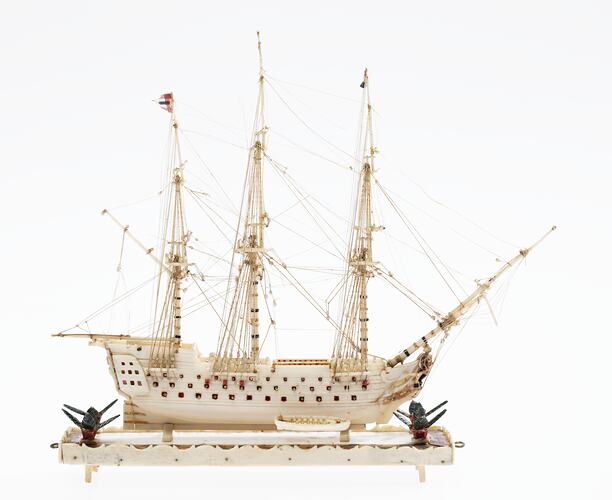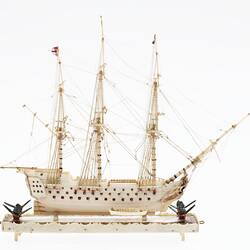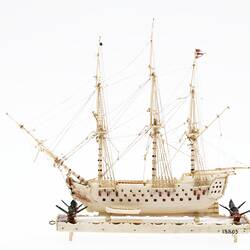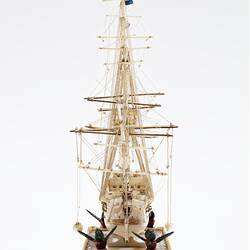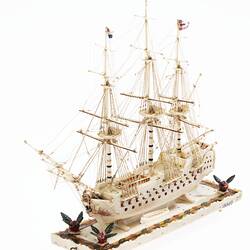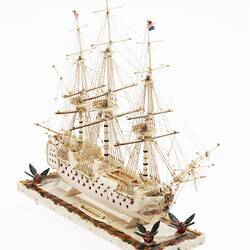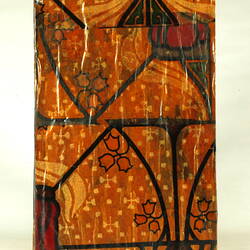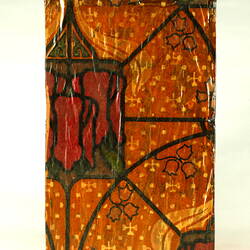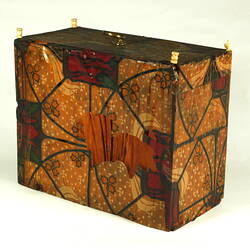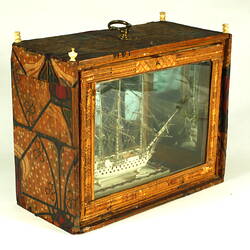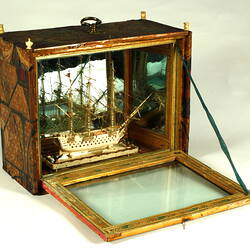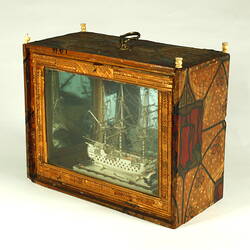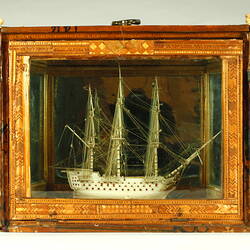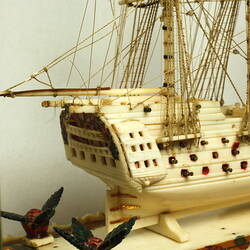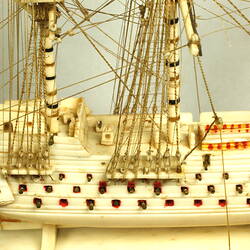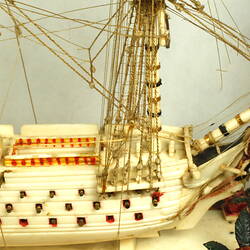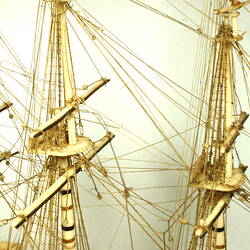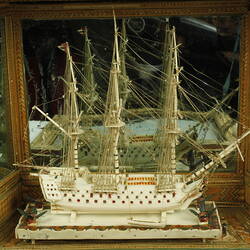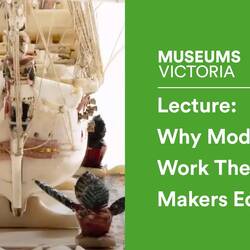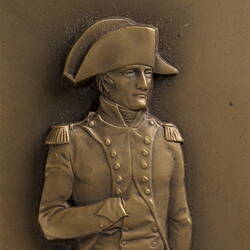Summary
Three decked Man-O-War model. Possibly of French design. Model is believed to have been made by a French prisoner of war captured at the Battle of the Nile in 1798. Model is apparently made from beef bone and the case is decorated with straw marquetry. This model was purchased by the Museum in 1926.
The Battle of the Nile (known also as the Battle of Aboukir Bay or Bataille d'Aboukir) was a major naval battle fought between the British Royal Navy and the Navy of the French Republic at Aboukir Bay on the Mediterranean coast off the Nile Delta of Egypt from the 1st to the 3rd of August 1798. The battle was the climax of a naval campaign that had raged across the Mediterranean during the previous three months, as a large French convoy sailed from Toulon to Alexandria carrying an expeditionary force under General Napoleon Bonaparte. The British fleet was led in the battle by Rear-Admiral Sir Horatio Nelson. The British forces decisively defeated the French under Vice-Admiral François-Paul Brueys d'Aigalliers.
The Battle of the Nile has been called "arguably, the most decisive naval engagement of the great age of sail" and "the most splendid and glorious success which the British Navy gained." The outcome reversed the strategic situation between the British and French naval forces in the Mediterranean and entrenched the Royal Navy in the dominant position that it retained for the rest of the Napoleonic Wars.
Physical Description
Three masted ship model carved from bone and painted inside wooden case with glass window front and mirrors inside. Case has bone finials on top, is lined with coloured waxed paper, and front window has parquetry border. Metal handle on top.
More Information
-
Collecting Areas
-
Acquisition Information
Purchase
-
Place & Date Made
France, circa 1798
Model is believed to have been made by a French prisoner of war. -
Classification
Water transport, Wind power - sailing vessels, Model naval vessels - french
-
Category
-
Discipline
-
Type of item
-
Object Dimensions
243 mm (Width), 119 mm (Depth), 218 mm (Height)
Measurements taken with case closed and metal handle upright. Height of case only (not including handle or finials): 194mm.
-
Object Dimensions
146 mm (Length), 50 mm (Width)
Size of base plate, including overhang of hooks and leaves
-
Object Dimensions
180 mm (Length), 70 mm (Width), 155 mm (Height)
Size of ship on base plate, including all masts and rigging overhang
-
References
Wikipedia contributors. (2023, October 23). Battle of the Nile. In Wikipedia, The Free Encyclopedia. Viewed, 09/11/2023, from [Link 1]
-
Keywords
Naval Vessels, Sailing Vessels, Models & Modelmaking, Prisoners of War, Battles, Handcrafts, Cattle
